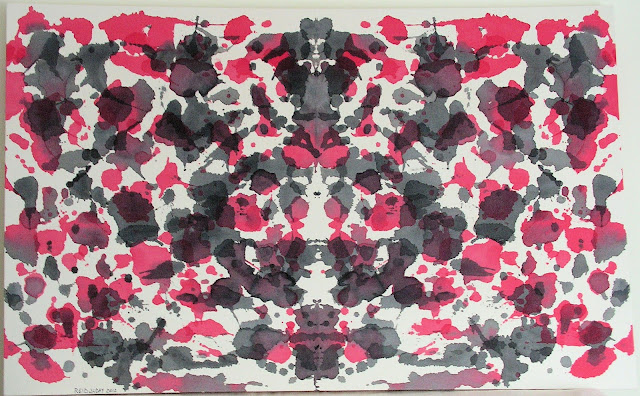I'm not a huge fan of Alfred Stieglitz's work, but my friend Chris is. When he asked for a painting, I figured I'd try to paint him one of Stieglitz's photographs. Or, I suppose, my interpretation of a Stieglitz photograph. This is the one I chose:
I liked the contrast of the natural-looking clouds and sky with this obvious 'alien' object that doesn't look like it belongs. The dirigible immediately draws your eye yet somehow also manages to make the rest of the image look more interesting. There's a menacing, ominous feel to this photograph, and the dirigible specifically. I also really liked the bright, middle region of the photograph.
Anyway...his living room is mostly black and white and overall pretty neutral. There's no bright posters on the walls or neon green furniture or anything like that, so I didn't want to mess with the feel of his place. I wanted to paint something neutral but intriguing since he doesn't have a lot of stuff hanging up; I figured a Stieglitz-based painting would work well.
Here's the wall I was working with, in the living room above the couch:
As with most paintings, I had no solid idea of how the piece was going to develop, but the first step is to get started! I decided to use unprimed canvas and apply several layers of stain to build up a background, and then add thicker paint for detail at the end.
Here are a few of the staining steps, each time getting darker and more detailed. I essentially just soaked the canvas in water, then applied a paint/water mixture to start building up areas of light and dark.
After I was happy with the stain, I started adding the thicker paint to the canvas. I mixed the paint with matte medium to thin it and remove the gloss. Using a plastic knife, a spray bottle, paint, and liberal amounts of water, I began to add more detail to the regions I had defined with the stain.
A small amount of medium yellow was added to the white and a small amount of white was added to the black - there's no pure black or white in the photograph and I wanted to reflect that.
In addition, the matte medium and the yellow paint gave the painting an 'old photograph' feel, removing the gloss and aging the color.
Using a very wet canvas with the thicker paint led to a lot of 'bleeding'; this created a blurry, out-of-focus effect that I was copying from the original photograph.
Here are a couple of the steps.
Now, I just need to add the dirigible and it's finished! Unfortunately, this step took about two months, trying to figure out exactly how I wanted it to come out. Chris was very patient. The dirigible had to be noticeable, but also needed to blend in with the clouds and sky. I tried various forms of paint and charcoal before getting one I was happy with.
Final resting place in his living room.







.JPG)







































